Secret To Squaring Your Clubface
- by Kelvin Miyahira
As we have seen in my previous article, the majority of golfers suffer from flipping, chicken winging and/or casting. I laid out the movements through the impact zone to try to help everyone understand how to get a great impact like Tiger Woods. But I think I skipped a step so I’ll backtrack and show you where we have to fix some errors before we can obtain a better impact. See also: Kelvin Miyahira's Interactive Golf Webinar.
I have two models, one is more of a beginner and the other has more of an advanced problem. You’ll get to see how some are just better than others at compensating during impact despite having the same technical problems.
Introducing the student
First up is Rick Malm. He is a physicist, electrical engineer, computer genius, and stereo 3D photography expert who worked for IBM for 30 years in product development and was at one time #5 in the world in billiards trick shots competitions. He is also the most brilliant thinker I’ve ever come to meet. What makes him a great subject is that he’s a beginner golfer who has the mindset of a guy who has what it takes to be the best in the world at something.
He comes with very little knowledge of the game and had taken some lessons when I first met him. So he was eager to learn but quick to point out all the inconsistencies of the instruction he’d been getting in the past. For example, he noticed how odd it was that square meant different things at different points in the swing. In explaining this to him, I got to learn how illogical our teaching models are at times, especially in the area of clubface angle at various point during the swing. So to clear up some of the confusion, let’s use Rick to show us what the average golfer typically does.
Clubface Alignment
Backswing
Many amateurs can achieve a square position at the top of the backswing so I will skip the square positions of the takeaway, halfway back, etc.
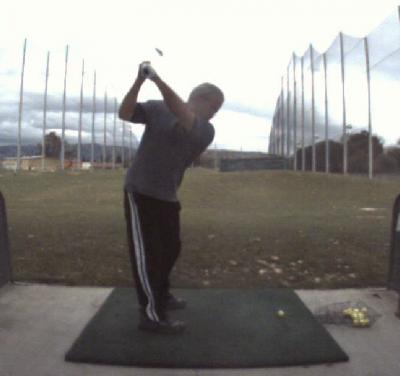

Most teachers agree that the clubface should be somewhat parallel to the left forearm at the top of the backswing. Here’s Rick in a very good clubface position at the top. Looks pretty much like Tiger.
So why does Rick hit a weak fade or slice while Tiger hits it far and straight? The answer must be in his downswing, a problem that is very common amongst the amateurs.
Downswing
Starting Down
Depending on who is your guru, the beginning of the downswing can be described in many different ways. For the sake of simplicity, we shall compare how Rick does it versus Tiger. Since many slicers, faders and even hookers of the ball suffer from the same malady, it should be quite instructive.
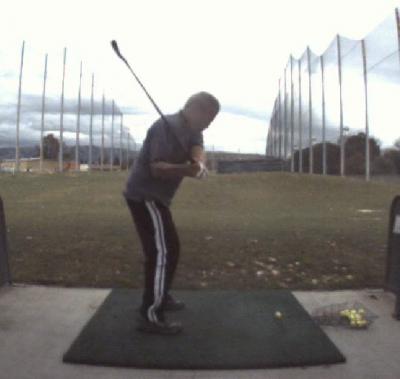
Here’s Rick
According to David Leadbetter’s book “The Golf Swing,” the clubface should open up slightly as you start the downswing. If that’s correct, Rick should be on the PGA tour. He’s very open starting down. The excessive opening of the clubface comes from excessive right forearm supination/left forearm pronation.

But take a look at Tiger.
Tiger doesn’t look anything like he’s opening the clubface. Hmmm.
In Rick’s words, he feels there is an inertial force that wants to pull the neck or hosel of the shaft towards the ball. This will open the face naturally. So how does Tiger prevent his club from opening like Rick’s? He’s doing several things that are important to note.
One, he is creating some lag. This isn’t that noticeable from this camera view but we know it is occurring whereas Rick is casting his wrists.
Two, he starts his downswing with his lower body and this in turn allows the right shoulder to drop into the right plane as well as the club. Rick starts his downswing with his shoulders, which tends to make his downswing plane a little steep. This ia all about right lateral bend or not having it. Also, early right shoulder internal rotation.
Three, his right palm twists outwards as he starts the downswing. The motion is as if you are directing traffic to stop coming from your right side. There is a little straightening of the right arm along with the palm rotating to face away from you. This is the little secret that no says much about. Yet it happens in most good golf swings.
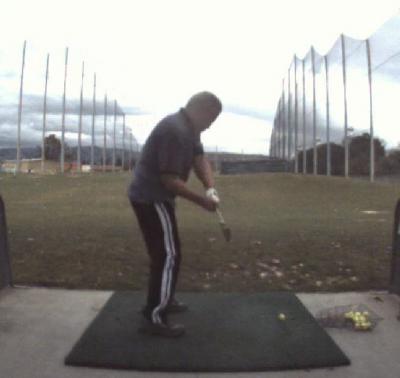

Approach to the ball
Compare Rick's very open clubface once again to Tiger's.
See also, Rick’s right wrist looks to be under the club with no angle held. He’s casting away like a mad man in the hopes of squaring the clubface.
Notice Tiger’s left wrist already looks slightly bowed compared to Rick’s. Early supination and left wrist flexion
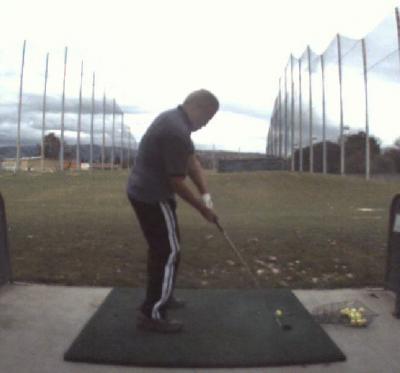
Just before impact
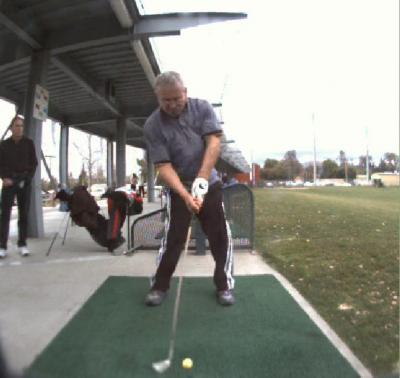

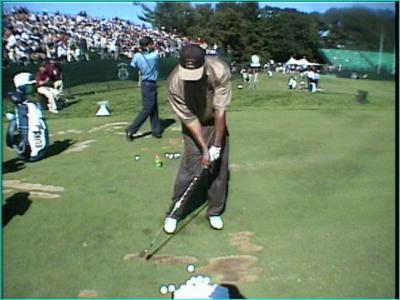
The writing is on the wall for poor Rick. He’s got a huge open clubface that doesn’t stand a chance of squaring up. Tiger? Ho hum. Another great shot.
Key Stats
Defining this quantitatively might help more than the vague terms I’m using. So here are the main points of interest:
One frame prior to impact, Tiger’s club is 40 degrees open from square. Rick has his club at 70 degrees open.
In degrees per second, Tiger’s club is rotating at 1212 degrees per second while Rick is like the Tazmanian Devil rotating at 2100 degrees per second.
Who do you think is going to be more consistent?
Through and after impact
Then one frame after impact, Tiger’s club rotates 25 degrees while Rick’s does not rotate at all. In degrees per second, Tiger’s club is rotating at 757 degrees per second while Rick’s does not rotate at all.
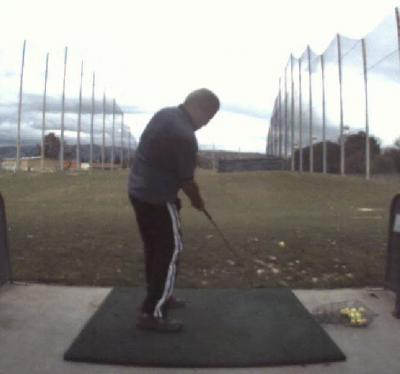
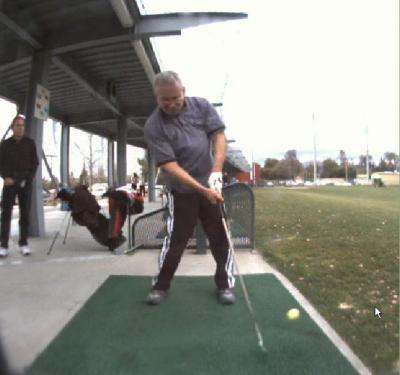

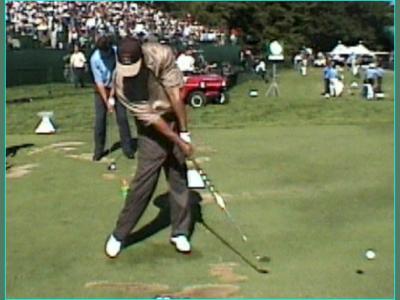
After impact Tiger’s clubface appears to continue to rotate while Rick’s stays open. Along with Rick’s out to in path, this will apply the excessive slice spin that robs Rick of both distance and directional control.
One of the biggest misunderstandings of the golf swing is that the hands have to rotate through impact. While this may be partly true, it directs the attention of the golfer to a point in the swing where all is lost already. This golfer has the same odds at getting the clubface squared at impact as me getting into a size 32 pants There’s too much error built into the swing and we already know what’s going to happen.
For Better Players
Kaleo Low is a junior golfer with the same flaws as Rick but has a much better downswing plane and doesn’t suffer from the slice. He hits big draws and straight but weak shots. The problem is still the same, an open clubface coming into impact and he typically jumps up to give him time to square the clubface with flippy wrists.
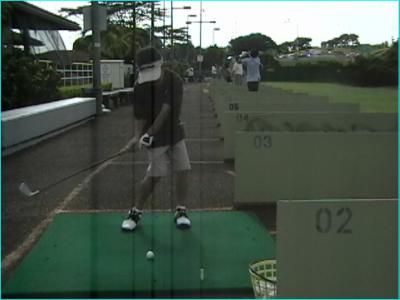
Here’s Kaleo in a position with his clubface too open and his left wrist beginning to cup or breakdown. It’s a flip waiting to happen. Left wrist extension and left forearm pronation

His wrists are definitely breaking now. He’s lost most of his angle too early.

And now he’s really lost his entire angle. His clubhead is passing his hands.
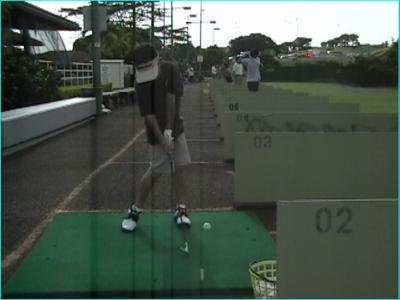
I call this the powder puff fluff shot because his left wrist has broken down and added loft to impact. It like turning your seven-iron into an eight-iron. He loses at least 10 yards on this shot because of the weak flip.
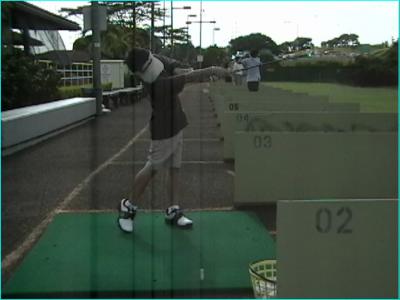
Now if you look at this position, you can see that he’s really tried to turn his clubface over. He’s actually over-rotated his hands increasing the potential for big hooks.
The Fix
Kaleo worked a few minutes on getting the clubface square earlier on the downswing. Then he could do this.

Clubface approaching the ball a little squarer.
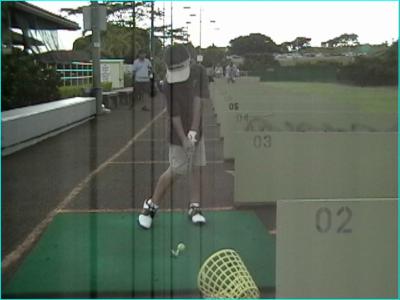
Nice flat wrist at impact with his hands ahead of the clubhead.
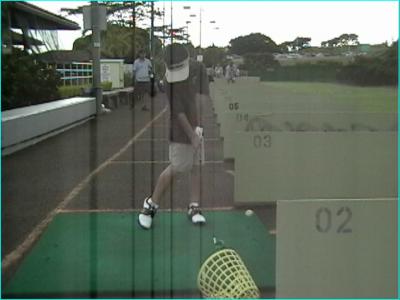
Here Kaleo is still driving through the ball with his entire body. His left wrist has not broken down. No flip.
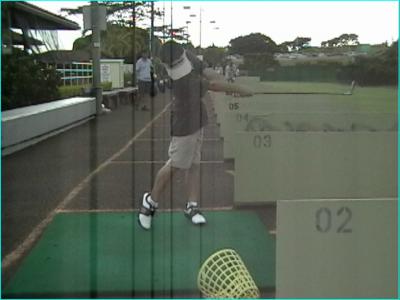
At this point, he no longer needs to over-rotate his clubface so he looks tons better.
The Keys
- Square the clubface early Use early left forearm supination, left wrist flexion
- Left wrist flat
- Right palm rotates away from the target starting down pronation
- Explode with body just before impact Rotation from the start along with right lateral bend
The key to fixing this problem would be to understand that your hands do NOT naturally want to work like this. It is a totally unnatural motion to the average person.
The Benefits
Rick is now hitting his driver around 250 yards with a draw instead of his 200 yard slice. He has shot an 88 and broken 100 and 90 in just a few short months after working on his swing over the internet.
Kaleo has lost his weak fluffy fade and is obtaining the distance he deserves. But what is more important is he’s learned how hit the ball correctly. Flippers always have the bottom of the arc a few inches behind the ball and consequently, he would alternate hitting slightly fat shots then thin shots, draws and fades with no consistency. Thus, by changing his impact position, his bottom of the arc moved forward by at least four inches and is now in front of the ball. Crisp, clean contact and much straighter shots are the norm now rather than the exception so we’ll look for great things from Kaleo in the future.
So get yourself focused on getting the clubface into better positions at the beginning of the downswing and you’ll be hitting it farther and straighter than ever before.